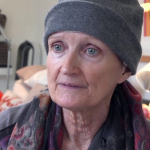An update on the impact of Coronavirus on brain cancer treatment
On 7 May we had our weekly update call with the National Clinical Director for Cancer and the Programme Director for the NHS Cancer. We are moving from the acute phase (where the focus has been on diagnosing and treating people with COVID-19) through to the restoration and recovery phases.
What does this mean?
The restoration phase is focused on getting cancer services back up and running to where they were pre COVID-19 and downsizing COVID-19 resource, including deep cleaning of CT scanners. This phase should last until August, when the recovery phase will begin. This will run through to March. This phase is where things are settling, as service delivery returns to normal, and new practices that have evolved from COVID-19 will be embedded.
What does these phases look like?
The restoration phase has already started with kickstarting diagnostic services – this is the priority. The 2 week wait (2ww) referral would normally have a run rate of 40,000 referrals a week. This dropped to 9,000 three weeks ago. This week the number of 2ww referrals has increased to 18,500 – an improvement but still well below 50% of where they should be.
Other diagnostic tests are being stratified according to risk – this means that the greater the risk the more priority will be given.
At the moment CT scanners are not running at ‘full tilt’ – but it is anticipated that more provision will be needed for CT scans. This is because the need will increase to meet the backlog of diagnostic demand. For example, 60 – 70% of bowel cancers are diagnosed through colonoscopy. However, CT scans are a useful tool in diagnosing bowel cancer so some of these colonoscopies may be referred for a CT scan instead. The extra CT capacity will be a time limited problem as the backlog is cleared.
Recovery phase will start in August and run through until March. This phase will be about supporting people who haven’t been to their GP but who are concerned they may have cancer, and picking up people who are on active surveillance (things are stable and you are being monitored). This group may have had scans postponed or cancelled. These will be picked up as the backlog of diagnostic tests is cleared. It is thought at this point that the number of referral waits will go above the usual ‘run rate’ as people come back into the system.
If you have had scans, surgery or treatment postponed, this should be picked up again once the risk of catching COVID-19 has passed and it is safe for you to restart your treatment or have your scan. If you have any concerns then do contact your clinical team.
Your chance to feedback about your experiences
There’s so much we still don’t know about COVID-19, like why some of us have mild symptoms or how diet affects our risk. Finding answers to these questions is more urgent than ever. Without having to leave your home, you can be of vital help by taking part in these surveys from IQVIA and CRUK.
IQVIA COVID Active Research Experience (CARE) project:
This CARE Programme is international and wants to find out about the factors that may increase, or decrease how badly we are affected by COVID-19 infections, including looking at underlying health conditions, prescription and over-the-counter medications, vitamins, minerals and herbal remedies.
CRUK Patient Experience Survey:
CRUK’s Patient Experience Survey wants to identify the impact of COVID-19 on cancer. CRUK wants to hear from patients affected by cancer about the challenges of day to day life, changes to treatments and care due to COVID-19. The insights from the survey will inform the work Cancer Research UK does in response to the impact of COVID-19 on cancer patients in the UK.










